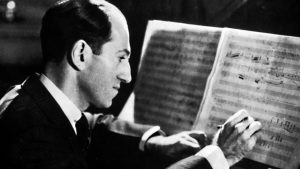Music of the 20th century is a general designation for a group of trends in the art of the late 19th and early 19th century. 20th century, in particular Modernism, acting under the motto of modernity, innovation. These currents also include Expressionism, Constructivism, Neoclassicism, as well as Dodecaphony, electronic music, etc.
MODERNISM
Music in the period 1910 – 1960
The 20th century is the time when technology changed the world. Music as an integral part of human life has also undergone global changes. Composers overturned many musical rules of the past and found new, bold themes and new ways of expressing them.

One of the significant figures who changed music in the first half of the century was Arnold Schoenberg, an Austrian, then an American composer, conductor, and musicologist. The group of musicians he led decided that tonal music (the logical construction of proportionate chords) had exhausted itself, and they proposed the so-called atonal music and the 12-tone composition system (known as “dodecaphony” or “serial technique”). Such music ceased to be melodic and harmonious, not all composers accepted their ideas.
EXPRESSIONISM
Expressionism in music took shape in the first decade of the 20th century; a number of its elements appeared in the last works of G. Mahler (“Song of the Earth”, 1908; 9th, 1909 and unfinished 10th symphony) and operas. R. Strauss (“Salome”, 1905; “Electra”, 1908).
However, to a greater extent, it is associated with the work of composers of the so-called. new Viennese school – A. Schoenberg (head of the school), A. Berg and A. Webern. Schoenberg, who began his journey with works close to late romanticism, came to the denial of romantic ideals, which gave way to moods of unconscious anxiety, fear of reality, pessimism and skepticism.
Composers of this trend have developed a range of special means of musical expression; they abandoned the broad melodious melody, clear tonal foundations; the principle of atonality contributed to the expression of unsteady mental states and inexplicable vague anxiety.
Many works are laconic, giving only hints of some image or emotional experience (in Webern’s cycle “5 Pieces for Orchestra”, 1910, some parts last less than 1 minute.)
Works written in the dodecaphonic technique are based on various kinds of repetitions of the so-called. series, which, according to representatives of this school, is the development of the principles of the formation of baroque music and early classicism. One of the earliest typical examples is Schoenberg’s monodrama “Waiting” (1909).
In the work of Webern, E. is reborn into a different stylistic formation, where the abstract rationalistic constructive principle dominates. Therefore, it was Webern who was recognized as the founder of post-war musical avant-garde.

Atonal music (Greek a – a negative particle; literally – non-tonal music), a concept related to music that does not have a tonal organization of sounds. It emerged in the early 1900s. and was associated with the work of the composers of the new Viennese school (A. Schoenberg, A. Berg, A. Webern). The main feature of A. m. is the absence of a unifying correlation of tones with the main center of the mode – the tonic. Hence – the amorphousness of musical speech, the disintegration of the structural functions of harmony, the dissonant level of sound, etc.
In 1922, Schoenberg invented the composition method “with 12 tones correlated only with each other” (later called dodecaphony), the task of which was to introduce a strict order into the anarchy of atomism. A. m. is the basis of many systems of composition included in the arsenal of avant-garde art. The aesthetic principles of A. m. are closely connected with expressionism. The method, techniques, and elements of classical music are found among composers of various trends (C. Ive, B. Britten, B. Bartok, A. Honegger, and others).
CONSTRUCTIVISM
Constructivism finds expression in a combination of harsh, sharply dissonant harmonies, syncopated, broken rhythmic figures. Jazz sounds are often used in the music of Constructivism. Despite the controversy that flared up around this direction, Constructivism, as a style, is alive to this day and enjoys well-deserved respect. An extreme trend in the art of the 20th century, which was especially widely developed after the First World War.
Constructivism is marked by the cult of the machine, depersonalizes a person, diminishes or completely denies the ideological and emotional content of art. When applied to music, he reduces creativity to the “building” of sound forms, combining various elements of musical
NEOCLASSICISM
Neoclassicism is a trend in the musical creativity of the 20th century, seeking to revive the artistic images, forms and stylistic devices of the music of the classical period, which in this case includes various musical schools of the 18th century. and earlier centuries.
Neoclassicism in music was a twentieth-century trend, particularly relevant in the period between the two world wars, during which composers sought to return to aesthetic prescriptions associated with a broadly defined notion of “to
